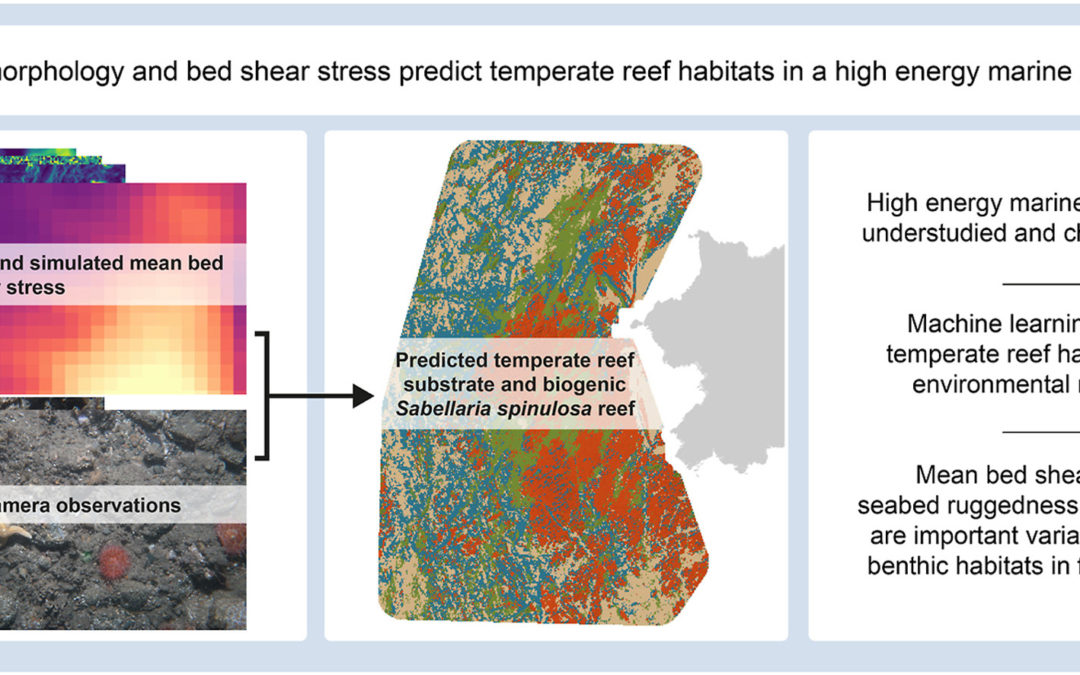Seabed morphology and bed shear stress predict temperate reef habitats in a high energy marine region
Tim Jackson-Bué, Gareth J. Williams, Timothy A. Whitton, Michael J. Roberts, Alice Goward Brown, Hana Amir, Jonathan King, Ben Powell, Steven J. Rowlands, Gerallt Llewelyn Jones & Andrew J. Davies
Abstract
High energy marine regions host ecologically important habitats like temperate reefs, but are less anthropogenically developed and understudied compared to lower energy waters. In the marine environment direct habitat observation is limited to small spatial scales, and high energy waters present additional logistical challenges and constraints. Semi-automated predictive habitat mapping is a cost-effective tool to map benthic habitats across large extents, but performance is context specific. High resolution environmental data used for predictive mapping are often limited to bathymetry, acoustic backscatter and their derivatives. However, hydrodynamic energy at the seabed is a critical habitat structuring factor and likely an important, yet rarely incorporated, predictor of habitat composition and spatial patterning. Here, we used a machine learning classification approach to map temperate reef substrate and biogenic reef habitat in a tidal energy development area, incorporating bathymetric derivatives at multiple scales and simulated tidally induced seabed shear stress. We mapped reef substrate (four classes: sediment (not reef), stony reef (low resemblance), stony reef (medium – high resemblance) and bedrock reef) with overall balanced accuracy of 71.7%. Our model to predict potential biogenic Sabellaria spinulosa reef performed less well with an overall balanced accuracy of 63.4%. Despite low performance metrics for the target class of potential reef in this model, it still provided insight into the importance of different environmental variables for mapping S. spinulosa biogenic reef habitat. Tidally induced mean bed shear stress was one of the most important predictor variables for both reef substrate and biogenic reef models, with ruggedness calculated at multiple scales from 3 m to 140 m also important for the reef substrate model. We identified previously unresolved relationships between temperate reef spatial distribution, hydrodynamic energy and seabed three-dimensional structure in energetic waters. Our findings contribute to a better understanding of the spatial ecology of high energy marine ecosystems and will inform evidence-based decision making for sustainable development, particularly within the growing tidal energy sector.
Request PDF
| To request a PDF copy of this paper, please enter your email address below: Your email address is not stored, it is only used to send an email with an attached PDF to you. |
Full Citation
Jackson-Bué T, Williams GJ, Whitton TA, Roberts MJ, Goward Brown A, Amir H, King J, Powell B, Rowlands SJ, Jones GL, Davies AJ (2022) Seabed morphology and bed shear stress predict temperate reef habitats in a high energy marine region. Estuarine, Coastal and Shelf Science: 107934

